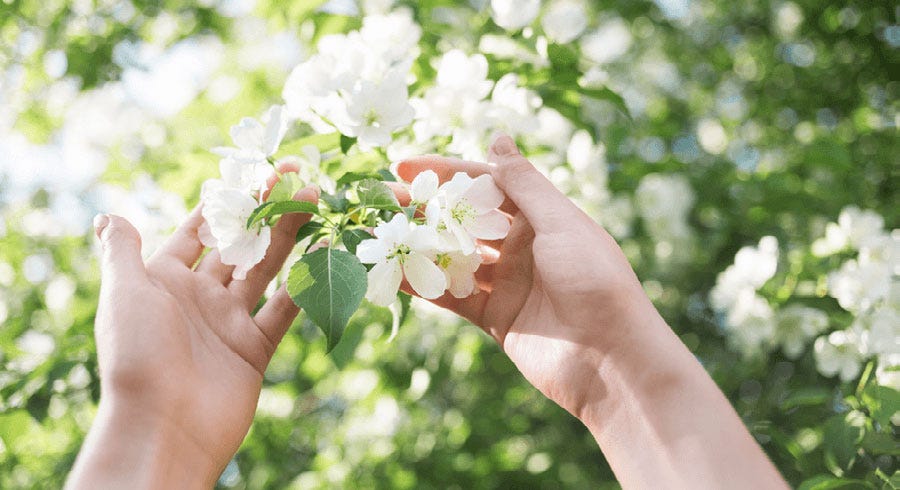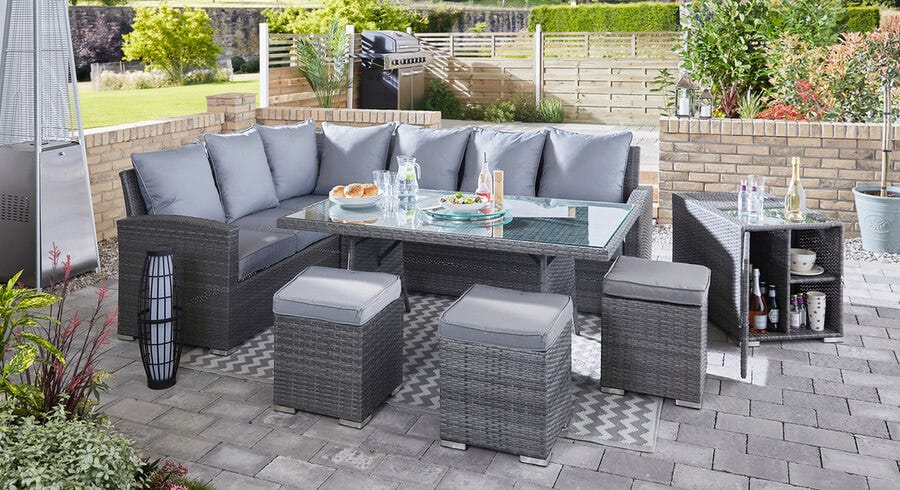Gardening Jobs for June


When it comes to gardening jobs for June, there are plenty! The start of summer brings lots of growth and a garden that’s bursting with colour and life. So we've spoken to our Garden Guru, Rich Redman to find out how to prepare your garden for summer to really make the most of your outside space. In this guide you’ll pick up plenty of tips on the plants and flowers you should be focusing on in June.


What to Do in the Garden in June
Top gardening tip this month: use cuttings to create additional plants!
If you want to take softwood cuttings from shrubs like lavender, fuchsias, philadelphus and forsythia to grow new plants from, June is the ideal month to do so, according to Rich. Take 5-10cm cuttings from healthy shoots of the tips of the plants by cutting the stem under a pair of leaves, and then remove the lower set of leaves.
To start off your new plant, place it in a pot full of cutting compost and keep it on a windowsill propagator until roots are grown.


Beds and Borders
It’s great to think about summer garden flowers for this year, but next year’s blossoms can’t be forgotten! For a riot of colour and scent next spring/summer from wallflowers, sweet williams and Canterbury bells, get seeds sown now. These biennial plants will grow plenty of foliage this year, but it will only be next year when they’ll treat you to beautiful floral displays.
To encourage a second flowering in late summer and keep your garden looking neat, prune the faded heads of lupins, delphiniums and other early flowering perennials to prevent them from going to seed.
While sweetpeas may be growing quickly, they still need support from potential strong winds and heavy rain. Prevent stems from being damaged by tying them up and securing to supports every 4” with twine.
For colourful shows of pansies later in the year, sow seeds now in trays, cover with vermiculite and place in an unheated propagator. In autumn they’ll be ready to plant out.
Water newly planted trees and shrubs frequently to prevent a slow-down of growth.
Breathe some life into overcrowded clusters of bearded iris. Once flowered, use a fork to gently lift them and split the rhizome with a knife to make lots of new pieces. Slice the fan of leaves at an angle, 6” from the root, and plant the pieces 6” apart from each other.
Check hollyhocks for rust disease. If you find discoloration on the upper sides of leaves, and little raised, orange lumps on the undersides, pick off any leaves that are badly infected and then use a suitable fungicide spray on the rest of the plant.
Get rid of suckers at the base of trees and roses to prevent them from suffocating the plant. Use your fingers to break them off or cut them with pruners as close as you can to their point of origin.
Prune deutzia and other shrubs that blossomed in May when flowers are spent.


Hedges: Can I Cut My Garden Hedge in June?
According to Rich, the best time to trim hedges in your garden is between spring and summer, so June is OK – but slightly earlier is best if you can manage it. If your hedge is new, prune in winter or early spring to encourage the best possible growth.
Before carrying out your annual trim, be careful to check for nesting birds, and delay until after nesting season if there are any signs of activity – it’s an offence to damage wild birds’ nests. Nesting season usually occurs between March and August.
Read our blog on How to Trim Hedges for more on this topic.


Potted Plants
Feed fuchsias, morning glory, petunias, and any other flowering plants with a fertiliser on a weekly basis to encourage better displays. Begin doing this as soon as you see buds starting to form, and carry on until the plants come to the end of their flowering period in early autumn. Rich recommends using a high potash liquid tomato feed to improve your tomato crop.
Encourage bigger and better blossoming on tuberous begonias by removing female flower buds (which are single, smaller and less showy), so the plant can direct all its energy into the more beautiful male blooms.
Make sure hanging baskets look their best throughout the season by deadheading fading flowers regularly, feeding the plants frequently and watering them twice or three times a week.


In the Kitchen Garden and Allotment
Use companion planting techniques by planting a handful of French marigolds next to tomato plants. Their heavy scent will help deter pests from visiting your precious tomatoes.
Remove the central flowering stems of rhubarb. Without these, the plants will continue to give you high quality crops for the longest time possible. It also promotes good cropping the following year.
Stop cutting stems of asparagus and feed plants with a general-purpose fertiliser to enhance next year’s crop.
Use your thumb and forefinger to pinch out the tops of runner beans when they’ve grown to the top of their supports. This will help shoots appear from the sides instead.
Throw some fine woven mesh netting over carrots to prevent carrot fly ruining your crops.
For the highest quality aubergines, remove any side shoots and remaining flowers once five fruits have formed.
Give cucumbers, chilli peppers, sweet peppers, and aubergines a dose of high potash fertiliser twice weekly as fruits begin to enlarge.


Fruit
Keep black, red and white currants well watered – if they dry out, your crops will be no good. Give them a good watering once a week, unless it rains, and water any potted plants before the compost dries out.
Get any early fruiting strawberries neatened up. Once the last fruit has been picked, cut the leaves back to 2”, uncovering new foliage. Give them a helping hand by feeding them with a general-purpose fertiliser.
Hang pheromone traps in apple trees to kill male codling moth caterpillars and minimise damage to your fruit, which they’ll otherwise spoil.
Rich recommends to throw netting over fruit bushes to prevent your crops becoming snacks for the birds.


Other Gardening Jobs for June
Pick out annual weeds like hairy bittercress, groundsel and chickweed by hand before they get out of control. If beds are overrun with these weeds, use a Dutch hoe.
In ponds, fish out matted-together small-leaved duckweed with a net, and swirl out blanket weed with a stick. Before throwing on your compost pile, leave the weeds at the side of the pond for a night to allow any pond creatures to crawl back into the water.
Once you’ve completed these June gardening jobs, your plot will be looking spick and span, with plants thriving and flowers flourishing. You can then sit back and enjoy the stunning floral displays and scents of summer!










